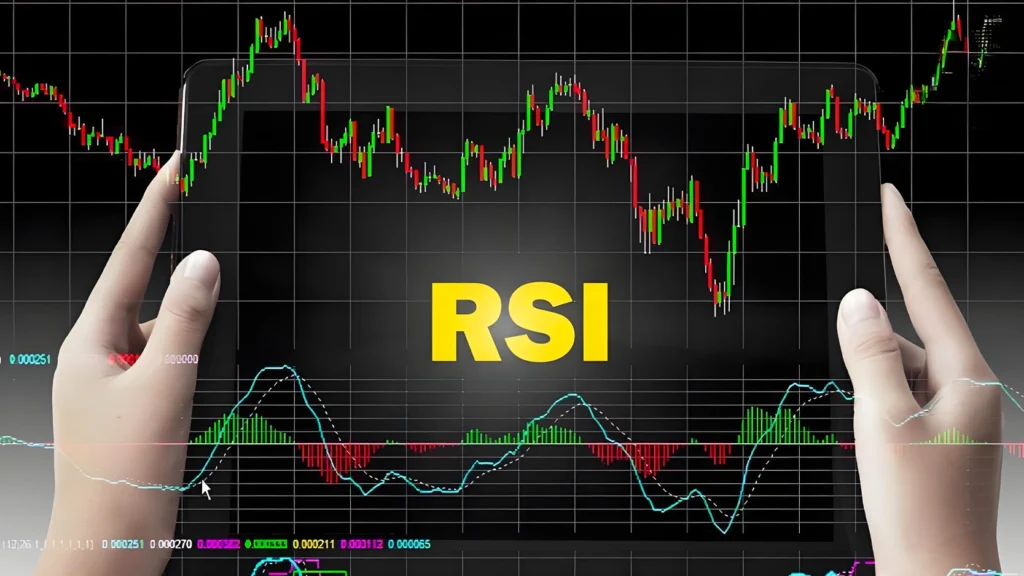What Is Stock Accumulation? How Can It Help You Build Long-Term Wealth?
In today’s environment of persistently low interest rates combined with inflationary pressures, simply depositing money in the bank is no longer sufficient to preserve the future value of your assets. An increasing number of investors are seeking more proactive ways to grow their wealth, shifting from traditional savers to active asset accumulators. Among the many strategies available, one philosophy that emphasizes patience and discipline — “stock accumulation” — has been gaining significant attention. This is not merely a financial trend, but a direct reflection of how personal financial thinking adapts to macroeconomic changes: evolving from simply “saving money” to proactively “accumulating productive assets”. Stock accumulation is not just an investment technique, it represents a fundamental shift in mindset. This article serves as your comprehensive investment guide, systematically breaking down the concept of “stock accumulation” from basic principles to advanced strategies, helping you take your first step toward building sustainable wealth.
So, What Exactly Is “Stock Accumulation”, and How Does It Differ From a Bank Time Deposit?
The term “stock accumulation” cleverly leverages the familiarity and sense of security people associate with “saving”, effectively lowering the psychological barrier for newcomers to the stock market. Yet behind this sense of comfort lies an entirely different asset nature and risk profile. Understanding these fundamental differences is the first lesson in safely embarking on your stock accumulation journey.
The Shift in the Concept of “Saving”: From Hoarding Cash to Accumulating Quality Assets
The core idea behind “stock accumulation” is to regularly channel funds into acquiring partial ownership of quality companies, namely, stocks. This process is akin to a farmer who consistently plants seeds with the aim of reaping a bountiful harvest in the future, rather than simply storing grain in a cellar.
By contrast, a traditional bank time deposit involves temporarily lending the use of your funds to the bank in exchange for a contractually agreed fixed interest rate, with the principal relatively secure within the deposit insurance limit. On the other hand, stock accumulation makes you a shareholder in one or more companies, giving you the right to share in their business results while also bearing the market risks associated with their operational performance. This shift in status, from creditor to owner, is the most fundamental difference between the two.
Dual Core Objectives: Generating Dividend Cash Flow and Achieving Long-Term Capital Appreciation
The returns from “stock accumulation” primarily come from two sources, which is part of its strong appeal. The first source is cash dividends. When a company operates profitably, its board of directors may decide to distribute part of the earnings to all shareholders in the form of cash. These dividends create an additional stream of passive income for investors. Due to their stability and predictability, shares of financially sound, dividend-paying companies are sometimes nicknamed “fixed-deposit stocks” in the market.
The second source is capital appreciation, commonly referred to as “price gains”. As the invested company continues to innovate, expand its market share, and enhance profitability, its intrinsic value grows over time. In the long run, this growth is typically reflected in the stock price, resulting in an upward trend that increases the overall value of the investor’s holdings. An effective stock accumulation strategy, in an ideal scenario, allows investors to reap the benefits of both income streams simultaneously.
Why Are More People Choosing the “Stock Accumulation” Strategy?
After understanding the basic definition of “stock accumulation”, the question naturally arises: what makes it so appealing that it attracts a wide range of individuals, from novice investors to seasoned professionals? This section will take a closer look at its underlying advantages and explain why it has become an essential component of modern personal financial planning.
Lowering the Entry Barrier: An Investment Philosophy That Doesn’t Require Constant Monitoring
The core of the “stock accumulation” strategy lies in long-term holding and disciplined contributions, rather than attempting to time the market with short-term precision. This approach frees investors from spending excessive time and energy tracking daily price fluctuations, interpreting complex technical charts, or digesting overwhelming market noise. It is particularly well-suited for busy professionals and novice investors who may be intimidated by complex financial operations, allowing them to participate in the market and share in the fruits of economic growth.
Creating Passive Income: Unlocking the Compounding Power of Dividend Reinvestment
One of the primary goals of “stock accumulation” is to receive stable dividend payouts from companies, providing investors with an additional stream of cash flow and enhancing financial flexibility. However, its deeper and more powerful impact lies in the “compounding effect“, often hailed as the eighth wonder of the world that occurs when investors reinvest these dividends to purchase more of the same asset.
This “interest-on-interest” process means that not only is your original capital generating returns, but the past returns (dividends) themselves are also working for you. Mathematically, this creates exponential growth, with the rate of asset accumulation accelerating the longer the investment horizon. The automatic discipline of reinvestment, combined with the positive reinforcement of dividend payouts, gradually builds investor confidence, creating a virtuous cycle. Over time, this helps investors stay committed even through market volatility and allows discipline and confidence to compound from it.
Maintaining a Steady Investment Mindset: The Antidote to Market Volatility
Because the “stock accumulation” strategy is framed with a time horizon spanning years or even decades, investors are able to view the market from a broader, more strategic perspective. In such a long-term context, short-term price declines may appear as nothing more than minor ripples in an overall upward trend. This mindset helps investors filter out the pervasive fear and greed in the market, avoiding the impulsive “buy high, sell low” decisions that often derail investment plans. For long-term investors, this strategy serves not only as a financial roadmap but also as a powerful psychological stabilizer, significantly reducing anxiety and stress throughout the investment journey.
What Potential Risks Must You Understand Before Embarking on the Path of “Stock Accumulation”?
Every investment decision should be grounded in a thorough understanding of its risks. While the “stock accumulation” strategy is often regarded as stable, it is by no means a risk-free journey. Before committing your hard-earned capital to the market, clearly identifying and assessing the following potential risks is a critical foundation for ensuring long-term investment success.
Market Volatility Risk: Asset Values Are Not Static
It is essential to emphasize that “stock accumulation” is fundamentally an investment in equities, not a bank deposit. As such, your net asset value will inevitably fluctuate with changes in overall market conditions, economic cycles, and investor sentiment. Even the strongest blue-chip companies are not immune to significant price declines during global recessions or periods of systemic financial risk. Investors must establish the correct mindset from the outset: stock accumulation does not guarantee capital preservation, and short-term losses in market value are a completely normal part of the investment process.
Business Risk: Avoid the Pitfall of “Earning Dividends but Losing on Price”
This is the most critical and potentially damaging company-specific risk in a “stock accumulation” strategy. If the company you invest in suffers from a fundamental shift in industry trends, poor management decisions, or a loss of competitive advantage due to disruptive technologies, its profitability may decline over time. In the worst-case scenario, the company may not only be unable to pay dividends, but its share price could remain depressed or even face delisting.
In such cases, the dividends you collected over the years would be far from enough to offset the substantial loss of your principal (share price), resulting in the so-called “earning dividends but losing on price” double loss. Even more dangerous is that the “long-term holding” and “buy-the-dip” mentality in stock accumulation, if applied to the wrong asset, can evolve into a confirmation bias, leading investors to continue allocating capital despite deteriorating fundamentals, thereby compounding losses.
Liquidity and Time Cost: The Double-Edged Sword of Long-Term Commitment
The success of a “stock accumulation” strategy relies heavily on long-term holding to maximize the compounding effect. This also means that the capital you commit should not be tapped for short-term needs. If an investor is forced to sell stocks at unfavorable prices particularly when the market is at a low due to sudden personal financial needs, paper losses could be turned into permanent realized losses. Therefore, funds allocated for stock accumulation should be long-term idle capital that you will not need for at least the next three to five years. Additionally, the strategy requires time for returns to materialize, making it unsuitable for investors seeking quick, short-term gains.
How to Start Your First “Stock Accumulation” Plan
Once you have carefully weighed the pros and cons of “stock accumulation” and made the decision to embark on this journey toward building wealth, the next step execution becomes critical.
Step 1: Open a Securities Account as the Foundation
Before engaging in any stock transactions in the Taiwan or US markets, you must have a securities trading account along with a corresponding settlement bank account. Investors should choose a reputable brokerage that offers a stable trading platform and a wide range of services. Many brokerages now provide convenient online account opening services, enabling you to complete the application without leaving home.
Core Execution Methods: Dollar-Cost Averaging vs. Fixed Share Purchase
Automation is the key to the success of a “stock accumulation” strategy, as it helps investors overcome human weaknesses and stick to their investment plan with discipline. The two most common approaches are “Dollar-Cost Averaging” and “Fixed Share Purchase”, each reflecting different capital conditions and investment philosophies.
Dollar-Cost Averaging (DCA): This strategy involves investing a fixed amount of money (e.g., NT$5,000) at a set time (e.g., the 6th of each month). The beauty of this method lies in its self-adjusting mechanism. When stock prices are high, the fixed amount buys fewer shares; when prices fall, it buys more shares. Over the long term, this can effectively lower the average holding cost. DCA is particularly suitable for investors with a steady monthly cash flow and a fixed budget.
Fixed Share Purchase: In this approach, the investor buys a set number of shares at regular intervals (e.g., 100 shares each month). This means the total amount invested each period will vary with the share price. Higher prices require more capital, while lower prices require less. This method suits investors with ample, flexible capital who aim to accumulate a precise number of shares in a specific stock.
Small-Capital Investor’s Tool: Using Odd-Lot Trading to Accumulate High-Priced Stocks
For many high-priced blue-chip stocks such as TSMC, buying a full board lot (1,000 shares) can require hundreds of thousands of NT dollars, making it seemingly out of reach for small-capital investors. Odd-lot trading has completely changed this situation, allowing investors to buy and sell in units of 1 to 999 shares, greatly lowering the barrier to participating in the growth of quality companies.
Investors can take advantage of intraday odd-lot trading (9:00 a.m. to 1:30 p.m. on trading days) or after-hours odd-lot trading (single matching at 2:30 p.m. on trading days) to gradually acquire shares in leading companies with smaller amounts of capital. By combining this approach with cashback services like those offered by Cashback Island, a portion of your trading fees is rebated on every purchase. Over time, this can effectively reduce your total holding cost and help your compounding snowball grow faster and larger.
How to Choose the Right Assets for Your Stock Accumulation Portfolio in the Vast Sea of Stocks?
Selecting the right investment targets is arguably half the battle when it comes to succeeding with a “stock accumulation” strategy. Faced with thousands of stocks and ETFs in the market, how should beginners build a portfolio that is both solid and growth-oriented?
Individual Stocks vs. ETFs: Concentrate or Diversify?
This is a core decision at the start of your stock accumulation journey, and each option has its own advantages and drawbacks.
Investing in individual stocks, if you can precisely identify high-quality companies with strong economic moats and on a fast growth track, offers potential returns that can far exceed the market average. However, this also means your risk is highly concentrated, your portfolio’s performance will depend directly on the success or failure of that company. This path requires investors to dedicate significant effort to researching financial statements, industry trends, and corporate governance, making the entry barrier relatively high.
Investing in Exchange-Traded Funds (ETFs) is essentially like purchasing a basket of stocks in one transaction. The primary advantage of this approach is effective diversification, which helps reduce the operational risk of any single company and avoids severe losses caused by a “black swan” event at one firm. ETFs generally exhibit lower overall volatility, offering a more stable holding experience, particularly suitable for investors who lack the time or expertise to conduct in-depth research on individual stocks. The trade-off, however, is that ETFs make it difficult to achieve explosive, market-beating returns. Performance typically mirrors the index they track, meaning gains are more stable but less likely to significantly outperform the broader market.
| Characteristics | Stock Accumulation – Individual Stocks | Stock Accumulation, ETFs |
| Risk Diversification | Highly concentrated risk; performance depends on a single company | Highly diversified risk; holds a basket of securities |
| Potential Returns | Higher potential, may generate excess returns | Close to market-average returns; unlikely to see explosive growth |
| Research Effort Required | Very high, requires in-depth analysis of financial statements, industry trends, and management | Relatively low; focus on selecting the right index and the ETF itself |
| Internal Costs | No management or custodial fees | Requires payment of management fees, custodial fees, and other internal expenses |
| Volatility | Higher, easily affected by news related to a single company | Lower, gains and losses of individual stocks offset each other |
| Psychological Burden | Greater, must endure higher uncertainty | Smaller, holding experience is relatively stable |
Key Indicators for Selecting Quality Individual Stocks
If you decide to take on the challenge of stock accumulation with individual stocks, focus on companies that possess long-term competitiveness and stability. Below are some quantitative and qualitative indicators for reference:
- Consistent Long-Term Profitability: Review the company’s financial data over at least the past five years, and select those whose earnings per share (EPS) can consistently remain at a stable level (for example, above 1) or show steady growth. This indicates that its core business has the ability to continuously generate profits.
- Stable and Sustainable Dividend Policy: Check the company’s dividend distribution records over the past 5 to 10 years. A company that is willing and able to pay stable dividends over the long term usually means its cash flow is solid, and that management is willing to share operating results with shareholders.
- Efficient Dividend Recovery: After a stock distributes dividends (ex-dividend), its reference price will be adjusted downward accordingly. If the stock price can return to its pre-dividend level within a period after the ex-dividend date, this process is called “dividend recovery”. Only when the dividend is fully recovered does it become actual extra income in your pocket. The speed and frequency of dividend recovery are important signals of a company’s financial strength.
- Company Size and Industry Position: For beginners, choosing companies with larger capital bases and industry-leading positions is generally a safer choice. Such companies tend to have more stable stock prices, are less susceptible to market manipulation, and usually have stronger capabilities to withstand economic cycles.
Understanding Popular Types of Stock Accumulation ETFs
If you choose to execute your stock accumulation plan through ETFs, you can select different types of products based on your investment objectives:
- Market-Capitalization ETFs: These ETFs track a basket of companies that represent the entire market or a specific market segment, aiming to capture the long-term growth dividends of the overall market.
- High-Dividend ETFs: The stock selection logic of these ETFs is to screen a basket of stocks with an expected higher future cash dividend yield. It is worth noting that the performance advantage between high-dividend strategies and market-cap strategies is not absolute, but is highly dependent on the prevailing market environment. In a long-term sideways market, the stable cash flow provided by high-dividend ETFs can bring both psychological comfort and actual returns; however, in a sustained bull market, market-cap ETFs usually have the advantage in total returns.
- Thematic/Industry ETFs: These ETFs focus on specific investment themes, such as ESG (Environmental, Social, and Governance), the semiconductor industry, the financial industry, or global technology.
When researching this wide range of investment options, investors can make good use of the professional calculation tools and real-time market updates provided on the CashbackIsland website. These resources can assist you in conducting a more comprehensive analysis and comparison, enabling you to make decisions that better suit your own needs.
How to Maintain a Strong Investment Mindset During the “Stock Accumulation” Process?
Investing is a marathon, not a 100-meter sprint. On this long and winding road, what ultimately defeats us is often not the unpredictable market, but the fear and greed within ourselves. Therefore, building a strong and rational investment mindset is the decisive factor that determines whether you can successfully navigate through bull and bear markets and ultimately reach your financial goals.
Long-Term Perspective: Understanding That “Time” Is the Most Important Ally in Stock Accumulation
The essence of the “stock accumulation” strategy lies in harnessing the power of compounding over time, which requires immense patience. Investors must establish a long-term perspective from the very beginning, focusing on years or even decades ahead, rather than fixating on gains or losses over a few days or months. Do not be easily swayed by short-term market noise, nor deviate from your established investment course due to temporary price fluctuations. Always remember, true wealth accumulation is a gradual process of steady preparation and eventual breakthrough.
Bear Market Resilience: How to Navigate Periods of Market Panic
A bear market is an inevitable trial for every long-term investor and represents the greatest challenge to one’s investment mindset. Psychological studies show that investors in bear markets often experience five emotional stages: denial, anger, bargaining, depression, and ultimately acceptance. Recognizing that these reactions are a normal part of human psychology can help you view your own state more objectively when you are in the midst of them.
When fear grips the market and investors rush to sell, it is crucial to remain calm. Avoid blindly “bottom fishing”, as no one can accurately predict where the market’s lowest point will be. At such times, return to your original investment rationale, reassess whether the fundamentals of your holdings have deteriorated, and stick to your established discipline. Rather than trying to seize fleeting so-called “opportunities”, exercising patience and allowing the dust to settle is often the wiser approach.
The Value of Discipline: Designing an Investment System to Manage Emotions
Successful investors are not devoid of emotions, they simply design systems that minimize emotional interference. Instead of relying on sheer willpower to suppress innate greed and fear, it is better to establish a rational framework where decisions are guided by rules rather than feelings.
Such a system might include: drafting a clear investment plan that explicitly states your objectives, buy-in criteria, holding principles, and conditions for selling; setting up automated investing, such as arranging fixed monthly dollar-cost averaging through your broker so that purchases occur without daily emotional influence; deliberately reducing the frequency of portfolio checks. For example, moving from daily monitoring to reviewing once a week or month; and implementing a “cooling-off period” of at least 24 hours before making any major decision outside your original plan. Handing control back to pre-set rules is a key to ensuring long-term success.
How Does the Macroeconomy Affect Your “Stock Accumulation” Strategy?
Our investments do not exist in a vacuum, they operate within a dynamic, ever-changing global economic system. Understanding how macroeconomic factors such as inflation and interest rates influence the stock market, as well as gaining insight into the hidden costs of ETFs, can make your “stock accumulation” strategy more forward-looking and resilient.
The Lasting Impact of Inflation and Interest Rate Changes
Inflation continuously erodes the purchasing power of cash, which is one of the core reasons people shift funds from bank savings to market investments. At the same time, when inflation runs too high, central banks often raise interest rates as part of monetary policy to cool the economy and stabilize prices.
Rising interest rates directly increase borrowing costs for businesses. For growth-oriented companies that rely heavily on financing for expansion, a higher interest rate environment can place pressure on both future profit expectations and current stock valuations. However, for financial stocks, particularly in the banking sector, rising rates can widen the spread between deposit and lending rates, potentially boosting profitability. Therefore, a seasoned stock accumulation investor should understand how different economic cycles affect various asset types, and use this knowledge to periodically review and adjust asset allocation within their portfolio.
Advanced ETF Considerations: Why Total Expense Ratio (TER) and Tracking Error Matter
For investors using ETFs for stock accumulation, these two concepts are often overlooked but can significantly affect long-term performance. They are the “silent killers” of compounding.
Total Expense Ratio (TER): Also known as the “expense ratio”, this is the cost charged by the ETF issuer to manage and operate the fund. It mainly includes management fees, custody fees, index licensing fees, and other miscellaneous expenses. The key point is that this fee is deducted daily from the ETF’s Net Asset Value (NAV). Investors receive no deduction notice and barely notice its impact, yet it slowly erodes your total returns day after day, year after year, much like a frog in slowly boiling water. For two ETFs tracking the same or similar index, choosing the one with the lower TER is one of the simplest and most effective ways for long-term investors to improve final performance.
Tracking Error: This metric measures the degree of difference between an ETF’s net asset value return and the return of its underlying benchmark index. Ideally, the two should perform identically. In reality, factors such as the presence of TER, “cash drag” caused by uninvested cash positions, and transaction costs incurred during index rebalancing inevitably lead to discrepancies. A higher tracking error indicates that the ETF has failed to closely replicate the index’s performance. For passive investors aiming to capture the market’s average return, selecting ETFs with consistently low tracking error over the long term is essential to achieving their investment objectives more accurately.
Conclusion: With Patience and Discipline, Make “Stock Accumulation” the Cornerstone of Your Financial Stability
Stock accumulation is more than an investment method, it is a journey of patience, discipline, and continuous learning. It strips away the noise and restlessness of speculative markets, bringing us back to the essence of value investing which is to grow alongside quality companies.
At its core, stock accumulation is about believing in the long-term value of quality assets and making time your most dependable ally. This path may lack the thrill of getting rich overnight, but it paves a steady road toward financial stability and peace of mind. On your investment journey, CashbackIsland strives to be your most reliable partner, not only by lowering your costs through trading rebates that add up over time, but also by continuously providing professional calculation tools and real-time market insights to help you approach every key decision with greater confidence and composure.
CashbackIsland continuously updates its trading education resources, and traders can visit the “CashbackIsland Education Guide” section to gain more forex knowledge and investment skills.
Frequently Asked Questions
Q1. What Is the Fundamental Difference Between Stock Accumulation and a Bank Time Deposit?
The returns from stock accumulation come from corporate profits and dividend growth, offering an inflation-hedging feature, whereas time deposits provide a fixed interest rate that may see its purchasing power eroded by inflation over time. The two differ entirely in risk profiles and return structures.
Q2. Is Stock Accumulation Truly a Guaranteed Profit?
All investments carry risks. Stock accumulation requires avoiding “value trap” targets (such as high-dividend companies with deteriorating fundamentals) and building a diversified portfolio to reduce the risk associated with any single stock.
“Trading financial derivatives involves high risk and may result in the loss of capital. The content of this article is for informational purposes only and does not constitute investment advice. Please make investment decisions prudently based on your personal financial situation. CashbackIsland assumes no responsibility for any derivative trading outcomes”.
Related articles
-
In the realm of modern financial market analysis, whether it’s the fast-changing forex market, the highly volatile cryptocurrency space, or traditional stock indices, technical analysis plays an indispensable role. Among the many technical indicators, the Relative Strength Index (RSI) is undoubtedly one of the most classic and widely used tools....2025 年 9 月 4 日
-
In financial market terminology, “bottom-fishing” is a highly enticing yet challenging concept. It refers to an investment strategy aimed at buying assets that have undergone significant price declines and are believed to be undervalued, with the expectation that their prices will eventually rebound sharply. This strategy embodies the ultimate expression...2025 年 8 月 13 日
-
In the fast-paced world of financial markets, price movements tend to capture most of the attention. Yet, just like a detective following clues, focusing only on the footprints (price) while ignoring their depth and density can lead to missing critical information. That often-overlooked dimension is trading volume. More than just...2025 年 8 月 13 日













